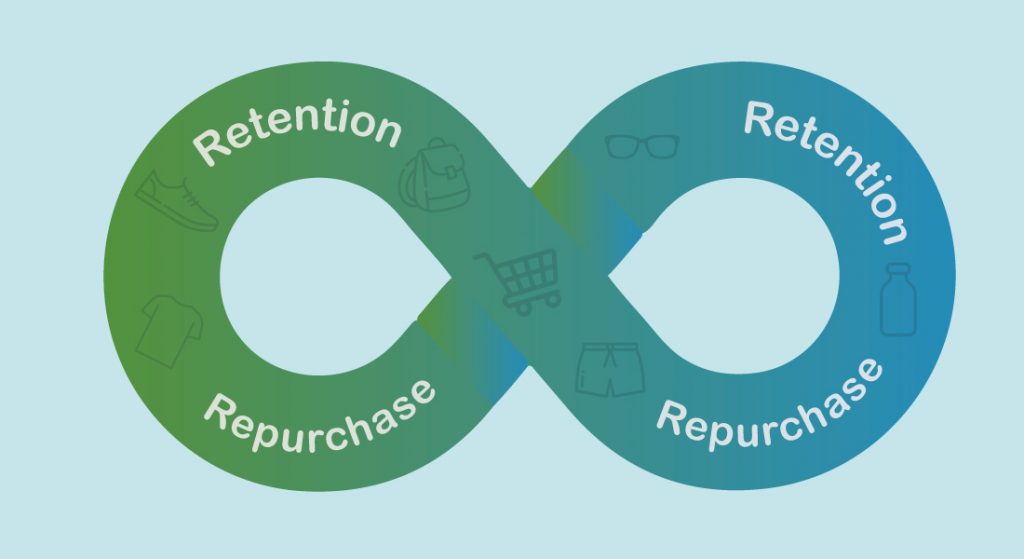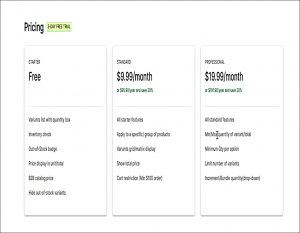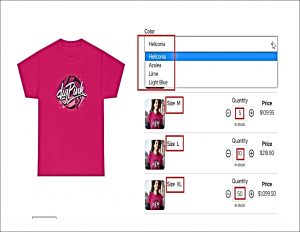
To keep a business running, you must acknowledge the importance of customer retention and repurchase rate, especially if you are a businessman at eCommerce. If you want remarkable success in your eCommerce store, give value to your repeat customers. Otherwise, it will badly impact your business growth and success.
You may be new to the eCommerce industry because, in this article, we will explain why repurchase rate and customer retention are essential for your business health. Additionally, this article will focus on why customer repurchase and retention rates are essential for eCommerce B2B business.
What Is Customer Repurchase?
A consumer brand’s performance in marketing and customer retention can largely be affected by its repurchase rate. It also addresses more fundamental concerns of brands like- Is your product well-suited to the market? How much do people appreciate and enjoy using your product?
The rate at which a customer makes a second purchase is the repurchase rate, repeat buy rate or customer retention rate. The key is understanding how to keep people returning for more of what you are selling.
The formula for your repurchase rate should consider the period you need to make sales. For a B2B business, repurchasing is beneficial to keep the sales volume high. For example, a B2B business has 8 retained customers and 6 made repeat purchases.
And the formula of Customer Repurchase Rate is = (Number of Customers Who Made Repeat Purchases / Number of Retained Customers) x 100
Now, let’s calculate the customer repurchase rate:
Customer Repurchase Rate = (6 / 8) x 100
Customer Repurchase Rate = 0.75 x 100
Customer Repurchase Rate = 75%
What Is Customer Retention Rate?
In business, the percentage of clients retained during a given time frame is known as the customer retention rate (CRR). CRR measures how many of an organization’s original customers still use its services after a set amount of time. It’s one of the most critical indicators of satisfied customers.
If a business has 10 customers at the start of the year and loses 2 by the end, the customer retention rate is 80%. That means-
Customer Retention Rate = (Number of Customers at the Start of the Year – Number of Customers Lost) / Number of Customers at the Start of the Year) x 100
let’s calculate the customer retention rate:
Customer Retention Rate = ((10 – 2) / 10) x 100
Customer Retention Rate = (8 / 10) x 100
Customer Retention Rate = 0.8 x 100
Customer Retention Rate = 80%
Differences Between Repurchase and Retention
Repurchase and retention are critical for eCommerce businesses because measuring them correctly gives an overview of a business.
A high repurchase rate of a business indicted that clients are satisfied enough and they are ready to return. This ratio is calculated by dividing the total number of consumers purchased from your company by the number of consumers who have purchased from your company multiple times.
On the other hand, the term “retention rate” refers to the proportion of original customers who return to a business after an initial purchase. You may calculate this by looking at the ratio of shoppers who purchased in the last 12 months to the total number of shoppers in the same time frame.
The retention rate measures how many customers return, and the repurchase rate measures how often those consumers buy from you again.
How to Increase Repeat Purchases and Customer Loyalty
Knowing which customer segments have a high retention rate or make frequent purchases from you is essential for building a successful retention marketing strategy while avoiding common mistakes.
If you want to see an improvement in these key performance indicators, you need to conduct experiments regularly to learn what works to increase the repurchase rate and improve retention.
Here are eight suggestions for boosting customer loyalty and repeat purchases:
- Offering Personalized Communication
- Helping Out Customers
- Engagement Strategies
- Reach Out to Customers
- Make A Brand Value
- Gathering Feedback
- Creative Subscription Model
Strategy 1- Offering Personalized Communication
Email and text messages are the most effective methods of direct client communication. One of the best ways to attract clients to open and interact with your automated messages is to use their first names.
This can be done using fairly easy tagging. The next step is to target them with highly personalized product recommendations and promotions based on their past purchases and other actions.
In the Infosys poll, 86% of participants agreed that personalization influences their purchasing choices.
To increase customer loyalty and retention, many companies are testing out direct involvement through comments and direct messages on social media, which provides yet another channel for personalized communications that will make your consumers feel valued.
Strategy 2- Helping out Customers
One of the most important aspects of any successful eCommerce brand is the quality of the service the customer receives after making a purchase. Customer retention can be significantly improved by assisting with product returns and exchanges, malfunctions, and other concerns.
eCommerce companies ca not afford to ignore their customers’ feelings. According to research conducted by Zendesk, up to 50% of customers will abandon a brand after just one negative interaction.
These days, customer service is not something you get after making a purchase. How frequently do you get a chatbot checking in on you when shopping online? Now, it is everywhere. Providing excellent service to clients before, during, and after a transaction is one of the most effective methods of keeping them as customers.
If you are someone who does not prefer to use a chatbot, then you can make a support team to provide human support.
Strategy 3- Engagement Strategies
When it comes to keeping your most devoted clients coming back, nothing beats a solid loyalty program. One effective strategy for increasing the frequency of satisfied consumers’ repeat purchases is to reward their loyalty with discounts, freebies, or other perks. Customers are more likely to make repeat purchases and may even spend more on each transaction if they believe their spending will be rewarded.
Strategy 4- Reach Out to Customers
One of the most significant tasks in the competitive industry of eCommerce is turning one-time shoppers into repetitive ones. Send an email to the customer after they complete a purchase from you.
Try to provide further information regarding the product they just purchased from you. Keep is mind that another aim of these emails is to talk about your business in front of your customer so that they feel interested in both your business and products.
Additionally, after getting an email, your customers might feel valued, or through email, you can reach out to one of your old customers by offering a welcome campaign as an incentive to return and make additional purchases. Try to maintain a specific time frame to reach put your customers. This is the best strategy to increase customer retention and future purchases.
Strategy 5- Make A Brand Value
To increase customer repurchase and customer retention, making a brand value is important because when you have a reputed product brand, customers will automatically repurchase from your store, and eventually, they will become repeat customers.
To make a brand value, first of all, think about your all-time favorite brand. Maybe, you have stayed with them for a long time, but what is the reason? The simple reason is that they keep their word and appreciate your commitment.
Now, just put yourself in their shoe and think like your customers. What they want and what types of products you sell. The product you admire may have a different motto and business strategy than you.
For example, if you are someone who is doing B2B wholesale business at Shopify, then your first duty is to find out the perfect audience for your business.
Use a third-party application, describe the feature of your product and present the usefulness of your product in front of the right audience. Describing your business feature with a different audience will result in time waste and energy loss.
Develop Amazon-like consistency as a customer-focused brand. Their strategy of focusing on their customers has brought in record revenue.
Strategy 6- Gathering Feedback
One of the best methods to learn where your brand experience is succeeding and where it could be lacking is to ask for feedback from your target audience. Those who take the time to complete a survey after purchasing are more likely to remain loyal consumers. Know how to appreciate your loyal customers.
Customers who leave reviews and get responses are 80 percent more inclined to buy from the company again, according to research by Bain & Company.
An invaluable source of brand improvement and UX enhancement ideas is the feedback of your actual customers. Moreover, having landing pages and user-friendly product pages that are rich in content is crucial to get feedback.
Additionally, using pictures that perfectly illustrate your product, product videos that elaborate on its benefits and usage your product, and content that quickly and clearly explains what you are selling will help your business to get reviews.
The repurchase and retention rate increases when customers find correct or sufficient information on product pages.
Strategy 7- Creative Subscription Model
A subscription-based business strategy is one of the best ways to ensure a high percentage of repeat purchases and customer loyalty.
Zuora’s research indicates that subscription-based companies have an average annual customer retention rate of 90% compared to non-subscription companies’ 80%.
Built-in retention occurs when a business can supply its product or service to clients on a predetermined schedule and bill them regularly. This is the most reliable method for ensuring a steady stream of monthly revenue and growth for your business.
One of the best methods to ensure that customers return and boost your overall customer lifetime value (CLV) is to convert one-time buys into subscribers. Though, many companies depend on a sizable portion of their marketing budgets to reach the goal.
If you are such a business person with a different customer base, then offer different business plans to them so that the customer is satisfied. For example, if you see the picture below, this application offers three different package plans with a 3-day free trial, which is ultimately appropriate for all types of customers.

Why is Customer Repurchase And Retention Important For B2B eCommerce?

Gaining new consumers can be expensive in the B2B eCommerce industry. However, you may maximize your marketing efforts and increase your ROI by concentrating on repeat purchases and customer loyalty.
Maintaining good relationships with existing customers saves time and money compared to seeking new customers. Here are some reasons why both repurchase and retention is important:
- Create a Customer Base That Brings in Money
- Bring New Customers Through Referral
- Increasing Happiness and Dedication of Your Customers
- Open New Market Scopes for Your Products
Reason 1- Create a Customer Base That Brings in Money
All B2B companies depend critically on their returning clientele. Increase revenue and the average order value by incentivizing repeat purchases from existing consumers. As a result, profits rise, and the business becomes set for long-term expansion. One important thing to keep in mind is that, an existing customer should not be disappointed.
Reason 2- Bring New Customers Through Referral
Your satisfied customers will become the most loyal ones for your business. Customers will happily recommend your business to their professional contacts if you regularly deliver high-quality products, services, and support.
Positive word-of-mouth from satisfied customers is a great way to attract new clients and expand your business organically. In the highly competitive B2B sector, it is crucial to establish credibility and reliability to encourage repeat business.
Reason 3- Increasing Happiness and Dedication of Your Customers
Customer satisfaction and loyalty are key to retaining and attracting repeat business. Relationships with B2B eCommerce clients can be strengthened by offering them top-notch services. Grabbing the attention of B2B clients is not that much easier because they usually order in bulk, so they want to avoid taking risks.
These bonds not only help customer loyalty and boost the possibility of future purchases but also help you to beat your competition. Satisfied customers are more likely to remain loyal and make repeat purchases.
If you are doing a B2B wholesale business on a platform like Shopify, then you can use a third-party application to allow your customers to perform quick orders in the case of wholesale. Let’s have a look at an application that allows customers to do such activities-

Here, a store is selling t-shirts in Shopify, and he is using an app name MultiVariants – Bulk order app. With this app, he is showing all colors of t-shirts, sizes of t-shirts, prices and available stock badges in just one page. Additionally, his customer can order 75 t-shirts together, which is impossible in Shopify by default.
When as a businessperson, you will use such an application in his store, it will drastically increase the repurchase rate and customer retention.
Reason 4- Open New Market Scopes for Your Products
Companies that do B2B business can increase revenue through strategies like upselling and cross-selling when they use customer data to learn about their clients’ preferences.
By examining client feedback, as a B2B businessperson, you may provide product options that meet customer needs and increase sales. This improves the customer’s experience, increasing the average purchase amount and the customer’s loyalty to your brand.
Bottom Line
To conclude, For a B2B eCommerce business, customers must come back and shop again. Keeping your B2B eCommerce clients coming back for more can be accomplished by implementing the methods discussed in this article.
Offering loyalty programs, personalizing the shopping experience, and delivering first-rate customer service are all examples of repurchase and customer retention tactics.
